On the Road is a weekday feature spotlighting reader photo submissions.
From the exotic to the familiar, whether you’re traveling or in your own backyard, we would love to see the world through your eyes.
lashonharangue
Still on Santa Cruz Island, we continued driving up the mountain toward the private tortoise reserve. The terrain became mostly large green fenced pastures, some with cattle. Driving down a dirt road we started to spot the tortoises. Apparently they can share the pastures with the cattle.
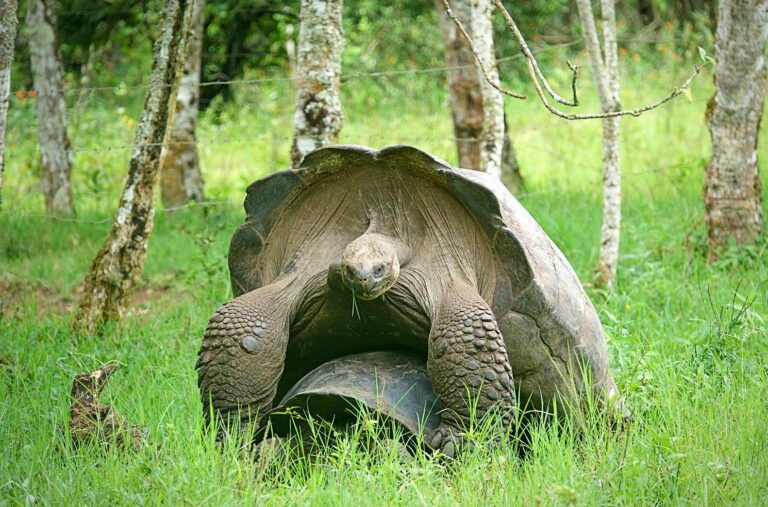
This photo might be better in BJ After Dark. Before we got to the reserve we all got off the bus to take some x-rated photos. As you can see the males are much bigger than the females.
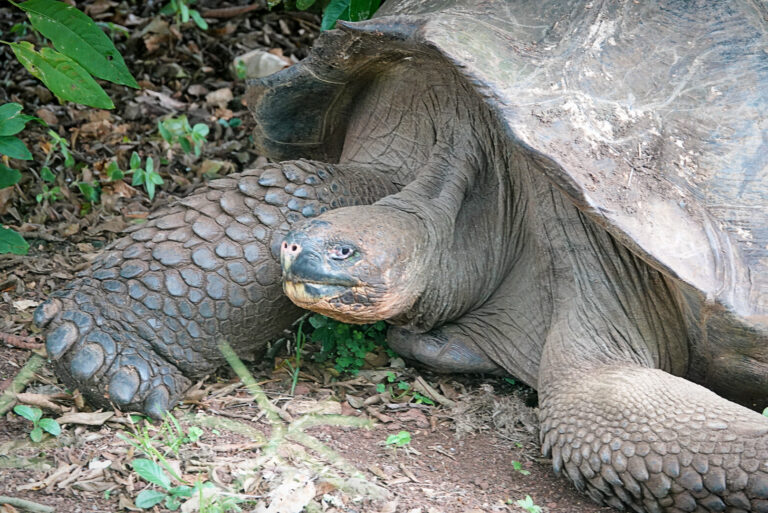
This tortoise was keeping cool under the vegetation. They apparently do a lot to modify the environment in order to keep cool and that keeps the land from becoming dense forest.
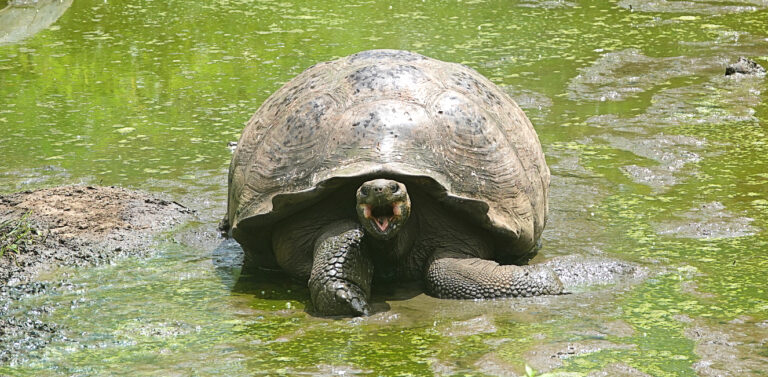
This tortoise was one a half dozen that were keeping cool in a small muddy pond.
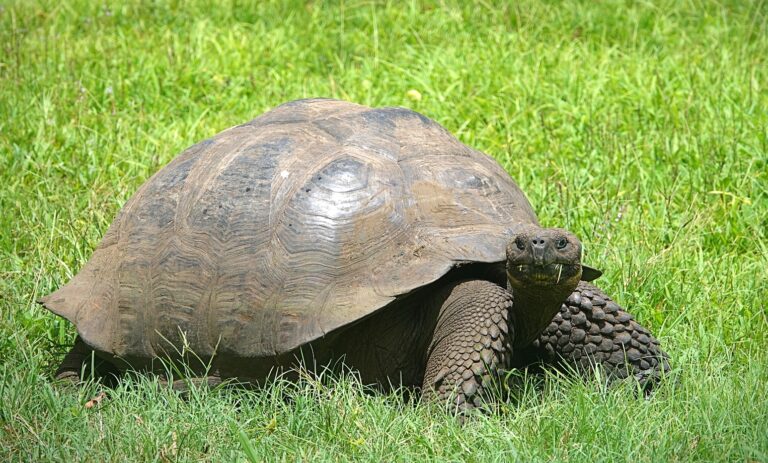
And this fellow was grazing in the green grass.
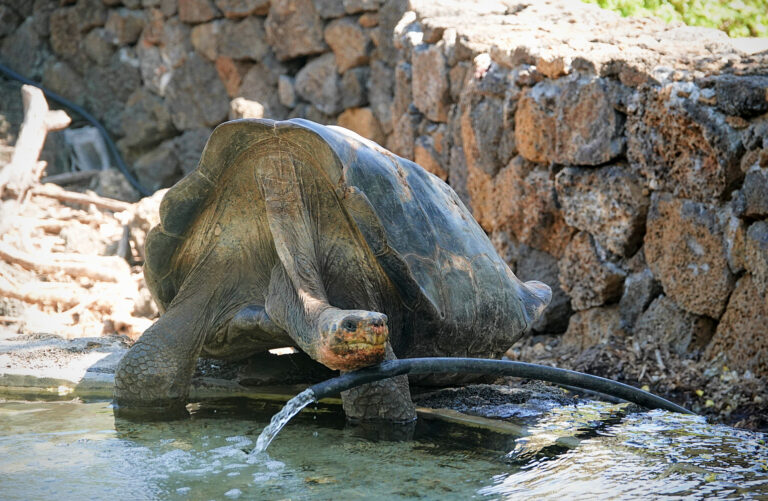
After lunch we drove back down to Puerto Ayora. It was hot and humid. We went to the center that breeds tortoises to reintroduce them to islands where they are endangered or have become extinct.
This is a Saddleback tortoise. His shell has a high dome and he has a much longer neck. Saddleback tortoises come from the smaller dryer islands where they needed to reach up high to get enough food, probably from prickly pear cactuses. This guy had the right idea to keep cool.
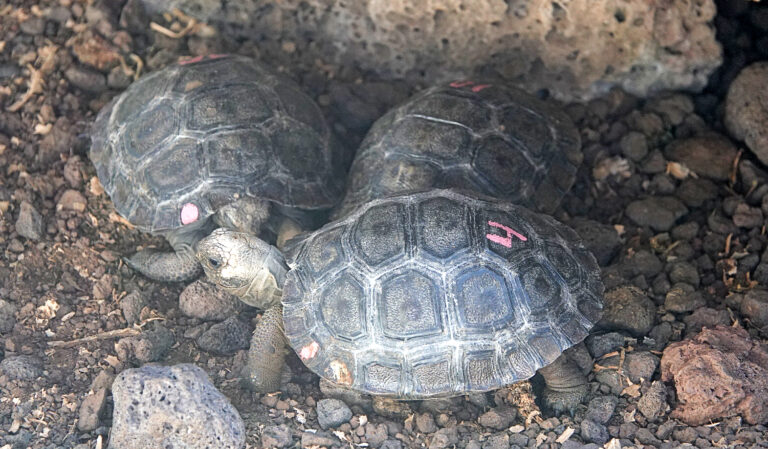
They do genetic testing to differentiate which turtles go to which islands. There are thirteen living species. On one island they discovered the tortoises had become hybridized, as tortoises from another island apparently arrived there from a shipwreck (the tortoises were taken aboard ships to provide fresh meat). They are attempting to reintroduce one of the extinct species by selectively breeding from this hybridized population.
After eggs hatch in a very controlled incubation process, the young ones are then raised in separate pens that are designed to reflect the environment they will be released into. They have to raise them for about twenty years before growing big enough to release.
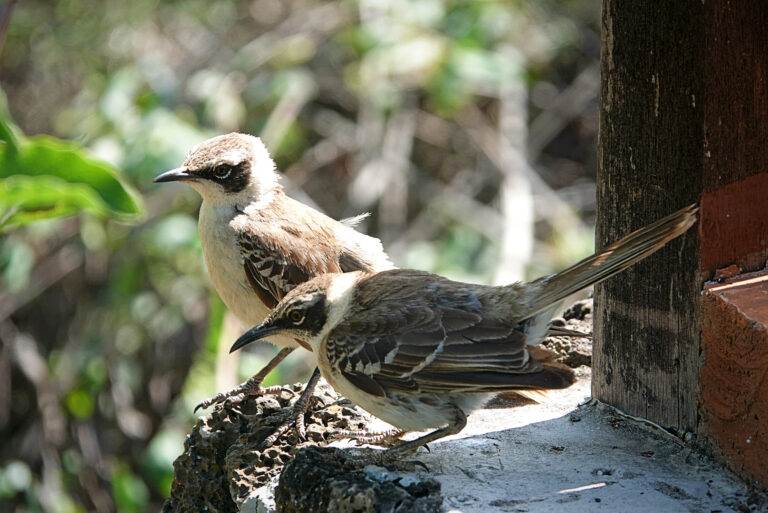
Two Galapagos mockingbirds on a wall that enclosed the growing tortoises.
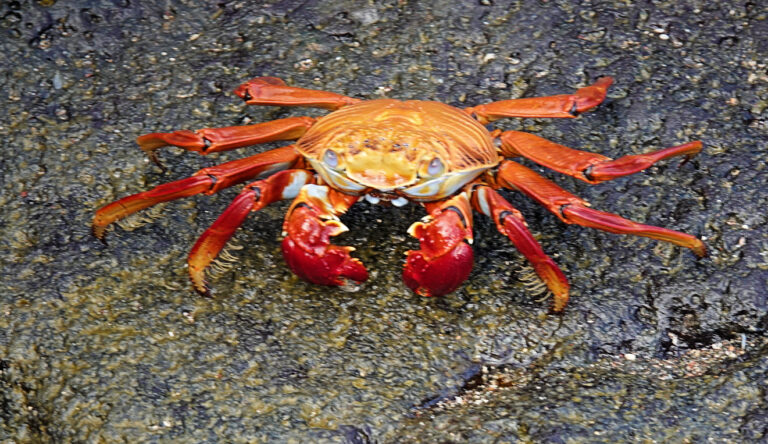
We went back to the harbor to return to the ship. I got my best photo of a Sally Lightfoot crab on a rock by the dock.
Next Stop – Genovesa Island

Baud
So cool.
eclare
These tortoise 🐢 photos are amazing! What wonderful creatures.
raven
Nice
Miss Bianca
Wow, tortoises!
Torrey
Great pictures to start the day with! Thank you, and thank you for the explanations.
Wag
very cool!
JustRuss
Pretty crab!
J R in WV
There are reproducing populations of some kind of desert tortoises in Cochise county AZ, where I built our winter camp lo these many years ago. People are thought to have released their pet tortoises in the area that was once moist playa, and is now dry playa. But the hard shell critters appear to be dong OK still yet.
BigJimSlade
Well, from that first picture, it looks like grandpa is still swinging! Do Galapagos tortoises eat oysters, or something? ;-)
eachother
Early in the morning in the crater of Vulcan Alcedo, the clouds had come in and filled the basin with fog. But you could still hear the grunts of the tortoises grunting in the passion of reproduction. They are lusty lot.
lashonharangue
@BigJimSlade: It is not uncommon for these tortoises to live past 100 years. Long period of sexual maturity.